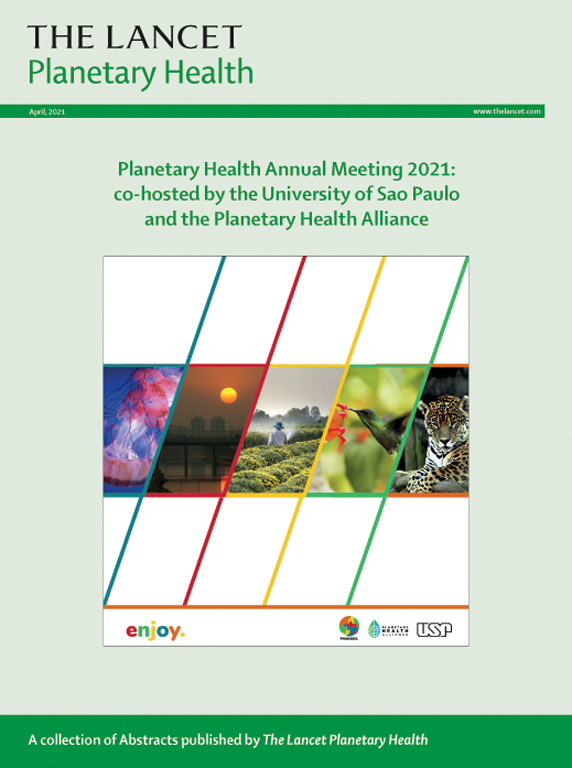Air pollution and fetal brain morphological development: a prospective cohort study
IF 21.6
1区 医学
Q1 ENVIRONMENTAL SCIENCES
引用次数: 0
Abstract
Background
There is a scarcity of evidence of the influence of exposure to air pollution during pregnancy on the human fetal brain characterised prenatally. We aimed to evaluate the association of exposure to air pollution with fetal brain morphology.
Methods
In this prospective cohort study, we used data from the Barcelona Life Study Cohort, Spain, which recruited 1080 pregnant women at 8–14 weeks of gestation between Oct 16, 2018, and April 14, 2021, from three major university hospitals in Barcelona. Eligible participants were aged 18–45 years, had a singleton pregnancy, and had a fetus without major congenital anomalies. Third-trimester transvaginal neurosonography was applied to evaluate fetal brain morphological development. We integrated comprehensive data on time–activity patterns with land use regression, dispersion, and hybrid models to estimate exposure to NO2, PM2·5, and black carbon at home, workplace, and commuting routes during pregnancy until the neurosonography date. Single-pollutant linear mixed regression models and multipollutant ridge regression models were applied to estimate the associations between air pollutants and fetal brain outcomes, controlled for confounders. Distributed lag linear models were used to identify the vulnerable windows.
Findings
Among 1080 participants recruited at baseline, 954 attended the follow-up for the neurosonographic examination, 754 of whom were included in this study. In single-pollutant models, we found that prenatal exposure to NO2, PM2·5, and black carbon was associated with a wider anterior horn of lateral ventricles, wider cisterna magna, and larger cerebellar vermis. We also observed that higher exposure to black carbon was related to a shallower Sylvian fissure. No clear pattern or associations were observed between air pollution and other structures of brain morphology. Multipollutant models showed that these associations with black carbon remained significant, whereas associations with PM2·5 and NO2 lost significance for some indicators. A potential vulnerability window in mid-to-late pregnancy was identified for these associations.
Interpretation
Exposure to air pollution might affect brain morphological development as early as the fetal stage. Our findings could have important policy implications as they highlight the need to mitigate exposure of pregnant individuals to air pollution in urban areas to protect fetal brain development.
Funding
European Research Council.
空气污染与胎儿脑形态发育:一项前瞻性队列研究
研究背景孕期空气污染暴露对胎儿大脑影响的证据很少。我们的目的是评估暴露于空气污染与胎儿大脑形态的关系。在这项前瞻性队列研究中,我们使用了来自西班牙巴塞罗那生命研究队列的数据,该队列于2018年10月16日至2021年4月14日期间从巴塞罗那三所主要大学医院招募了1080名妊娠8-14周的孕妇。符合条件的参与者年龄在18-45岁之间,单胎妊娠,胎儿无重大先天性异常。孕晚期经阴道神经超声评估胎儿脑形态发育。我们将时间-活动模式的综合数据与土地利用回归、分散和混合模型相结合,以估计怀孕期间在家中、工作场所和通勤路线上暴露于NO2、PM2·5和黑碳的情况,直到神经超声检查日期。采用单污染物线性混合回归模型和多污染物脊回归模型来估计空气污染物与胎儿脑结局之间的关系,控制混杂因素。采用分布滞后线性模型识别脆弱窗口。在基线招募的1080名参与者中,954人参加了神经超声检查的随访,其中754人纳入了本研究。在单一污染物模型中,我们发现产前暴露于NO2、PM2·5和黑碳与侧脑室前角变宽、大池变宽和小脑蚓变大有关。我们还观察到,较高的黑碳暴露与较浅的Sylvian裂缝有关。空气污染和其他脑形态结构之间没有明确的模式或联系。多污染物模型显示,这些与黑碳的相关性仍然显著,而与PM2·5和NO2的相关性在某些指标上失去了显著性。在妊娠中后期发现了这些关联的潜在脆弱性窗口。早在胎儿期,暴露在空气污染中就可能影响大脑形态发育。我们的研究结果可能具有重要的政策意义,因为它们强调了减少孕妇暴露于城市地区空气污染以保护胎儿大脑发育的必要性。资助欧洲研究委员会。
本文章由计算机程序翻译,如有差异,请以英文原文为准。
求助全文
约1分钟内获得全文
求助全文
来源期刊

Lancet Planetary Health
Multiple-
CiteScore
28.40
自引率
2.30%
发文量
272
审稿时长
8 weeks
期刊介绍:
The Lancet Planetary Health is a gold Open Access journal dedicated to investigating and addressing the multifaceted determinants of healthy human civilizations and their impact on natural systems. Positioned as a key player in sustainable development, the journal covers a broad, interdisciplinary scope, encompassing areas such as poverty, nutrition, gender equity, water and sanitation, energy, economic growth, industrialization, inequality, urbanization, human consumption and production, climate change, ocean health, land use, peace, and justice.
With a commitment to publishing high-quality research, comment, and correspondence, it aims to be the leading journal for sustainable development in the face of unprecedented dangers and threats.
 求助内容:
求助内容: 应助结果提醒方式:
应助结果提醒方式:


